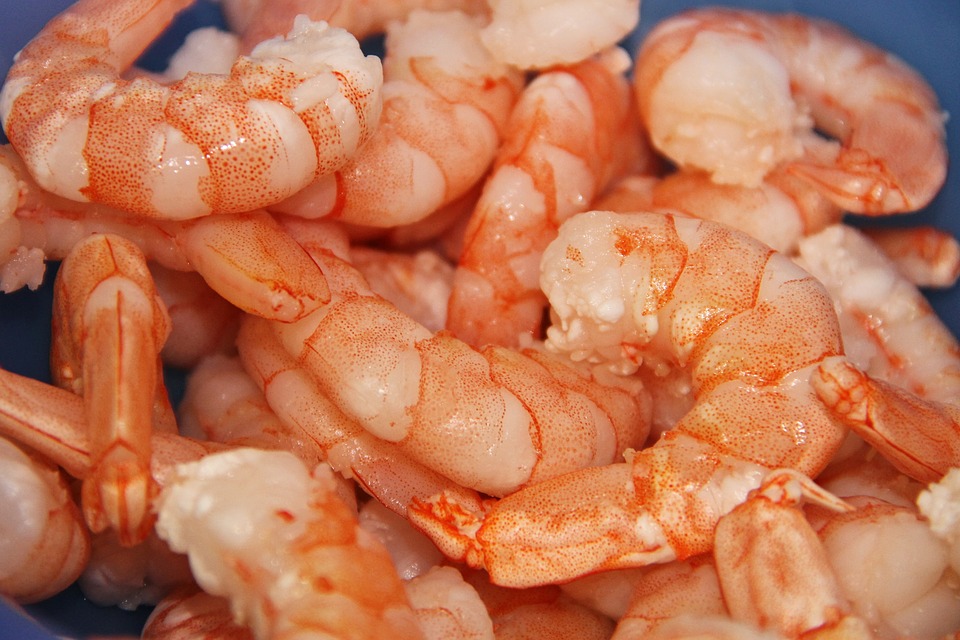The shrimp is an aquatic crustacean, a class of higher crayfish. 100 g of shrimp meat contains 24 g of protein and 1 g of fat, with a nutritional value of about 100 calories. Shrimp is said to be good for many things, from the heart to the brain, and it is a fairly safe source of protein. If you clean the shrimp yourself at the table, it is difficult to eat a lot of it, which is also a healthy quality compared to, for example, dumplings. The taste of shrimp is pleasant and memorable, you can’t mistake it. At the same time, shrimp can easily absorb different spices, seasonings and sauces.
What can we do with shrimp?
Quite a lot – nothing, boil, fry, bake – the whole spectrum. Let’s take it one step at a time.
How to cook prawns. Eat it without cooking it.
Boiled and frozen shrimp is a ready-to-eat product, so you can eat it without cooking it. The prawns are boiled in seawater, so there is already enough salt. All that remains is to defrost the shrimp and peel it. This is done quite often, especially if the shrimp are large. They are served on ice and eaten with all sorts of sauces, often spicy ones. Thawed shrimp go in different salads like Caesar or crab, on sandwiches, in the long and widely popular prawn cocktail – a standard item on snack menus throughout the English-speaking world. The prawn tails are hung in a jam vase and doused with Thousand Island sauce. No, it’s not a mixture of mayonnaise and ketchup, as many people think. It’s delicious. Yes, it’s clear that for salads and sandwiches, the prawns are peeled but not when served on ice, for added beauty.
How to prepare the prawns. Boil
Cooking makes the prawns more salty, which is also important. A hot brine forms inside the shrimp, giving it added nutritional and flavor value. The brine fills the head so that it makes sense. Spices and spices enhance the flavor and aroma. Finally, it brings the shrimp closer to the much more familiar river crayfish. However, under Soviet rule they were almost forgotten, except for the Volga region and the Don.
What is important to know in this matter? There is no need to defrost the shrimp. The shrimps must boil quickly, i.e. a lot of water should be taken. One kilo of shrimp is usually put in 20 litres of water. You do not need to do it at home, but it is advisable to have a bigger pot. Salt and all spices should be added before the shrimp and let them cook for a couple of minutes. Dill and lemon are very flavourful and fresh; they can be put right before the prawns. Pour the shrimp into the pot, stir well and close with the lid, so that it boils again much faster. Once boiling, do not boil the prawns for longer than a couple of minutes, turn off the heat, stir again and close with the lid. Don’t serve the prawns straight away – they need to ripen otherwise the meat will be dry and tough. Allow them to stand under the lid until they sink and settle to the bottom, usually a quarter of an hour.
Shrimp are best cooked by Cajuns from Louisiana, descendants of the Canadian French. They use a pre-mixed shellfish boil with mustard, coriander and dill seeds, cayenne pepper, paprika, bay leaf and allspice. Cajuns say, “Those who don’t suck the head off the shrimp, we either get them out of the table right away or don’t put them at the table again. A very correct approach, it seems to me.
When boiling shrimp, as you can easily guess, broth is formed. A prudent hostess wouldn’t pour out such a rich broth. The only problem is that such broth is usually too salty and too spicy. The saltiness of the water should, in good taste, be the same as that of sea water, i.e. 35 g/litre. If you reduce the salt and spices, it will affect the flavor of the boiled prawns. This is where compromises have to be made. But less than a tablespoon of salt per liter is not good either. Shrimp broth is great as a base for Thai soups like tom yam. Usually you have to collect heads and shells from raw shrimp to make such a broth, and here you have almost everything. You can also boil rice in this broth and it will draw the salt out of the broth. A glass of rice is usually enough for this purpose.
How to prepare the prawns. Fry
You can also fry the prawns, which is handy if you don’t have a lot of them and they are quite large. The best way is to fry them in butter and garlic. To do this, heat a large heavy frying pan with high edges well over a high heat and place the prawns in a single layer on it without defrosting. When the prawns have released water, salt and season them. Wait for the water to evaporate and generously add the butter in chunks to the pan. Cover with the lid and allow to heat well for a couple of minutes. Remove the lid and sprinkle thinly sliced garlic on top and drizzle with lemon juice. Leave under the lid for another minute, shaking occasionally. If serving, sprinkle with fresh coriander or parsley leaves.
How to prepare the prawns. Roast
You can also cook the prawns in the oven in the same way if you have more, for a whole tray. Preheat the oven to 180°C. Line a baking tray with baking paper and arrange the prawns in a single layer, possibly overlapping. Sprinkle it with salt and pepper. Put in the oven and allow the water to evaporate and the prawns to brown a little on top – about 7-10 minutes. Take out the tray, scatter the garlic cloves and pieces of butter and return the tray to the oven for another three to four minutes, the butter should melt completely.
How to cook shrimp, Size matters
Now a little about the size of the shrimp. Shrimp are sorted and calibrated when they are sold, you can see numbers like 50-70 on the box or bag. The numbers indicate how many shrimp there are in a kilo. If the shrimp comes from Canada, it will be the number per pound (454 g), so pay attention. Size has nothing to do directly with taste. You need different sizes for different dishes.
Look, for serving raw on ice, you’d better take large shrimp, 40-50 gauge, they will look the most advantageous. The same ones are usually peeled in shrimp cocktail for dressing. You can buy peeled tails for a cocktail, but they are usually in a thick icy glaze, after defrosting you will lose half the weight, make an allowance for it. Tails without the glaze can only be fried, for example in a wok with different vegetables, otherwise they’re a bit dry.
For sandwiches and mayonnaise salads it is more convenient to buy already peeled small shrimp, tails, usually from 200 per kilo or more, they also go in different stuffings, pâtés, rillettes and fillers.
Shrimp of 50-70 gauge are good for frying and baking. Shrimp are usually used in Asian soups and noodles because of their size.
Beer-boiled shrimp of 70-90 caliber (90-110 is also possible, but they are too small, so it is a lot of fuss). These shrimps behave best when boiled – they are good to take up the broth, do not remain tough and coarse, as larger shrimp, well cleaned.
So-called “king prawns” are usually more expensive and more red, only looking pretty. They have a coarser, drier texture and can only be saved by plenty of oil or sauce, and not always.
How to peel a prawn
If you have to clean the shrimp yourself, do it after it has defrosted completely. Shrimp defrost fairly quickly, there is no need to stimulate them. Dump them out of the bag into a colander, pour cold water over them and put them in a bigger bowl. In an hour or two, the prawns will thaw. Next, tear off the shrimp’s head, flip the tail upside down, pinch the legs on one side between your thumb and forefinger and pull to the side. Several joints of the shell will be removed from the tail. For beauty, it is common to leave the last link of the shell with the tail, it is grasped with the fingers when eating shrimp with the hands (which is most often the case).
After the shrimp have been cleaned, you will be left with peelings. There is no need to throw them away, they make a good broth for Asian soups, as mentioned above. It makes sense to collect a lot of them, unless you peel three kilos of shrimp at once. You can freeze the shells and the heads again to make them as good as new. For the broth, heat a little oil in a pan, throw the shells and the heads in and fry well until golden brown, stirring all the time. Then pour in cold water and simmer for about 15-20 minutes after boiling, adding the ginger, green onions, fish sauce, lemongrass and kaffir lime leaves. Strain through a colander and use as a base for the soup.

